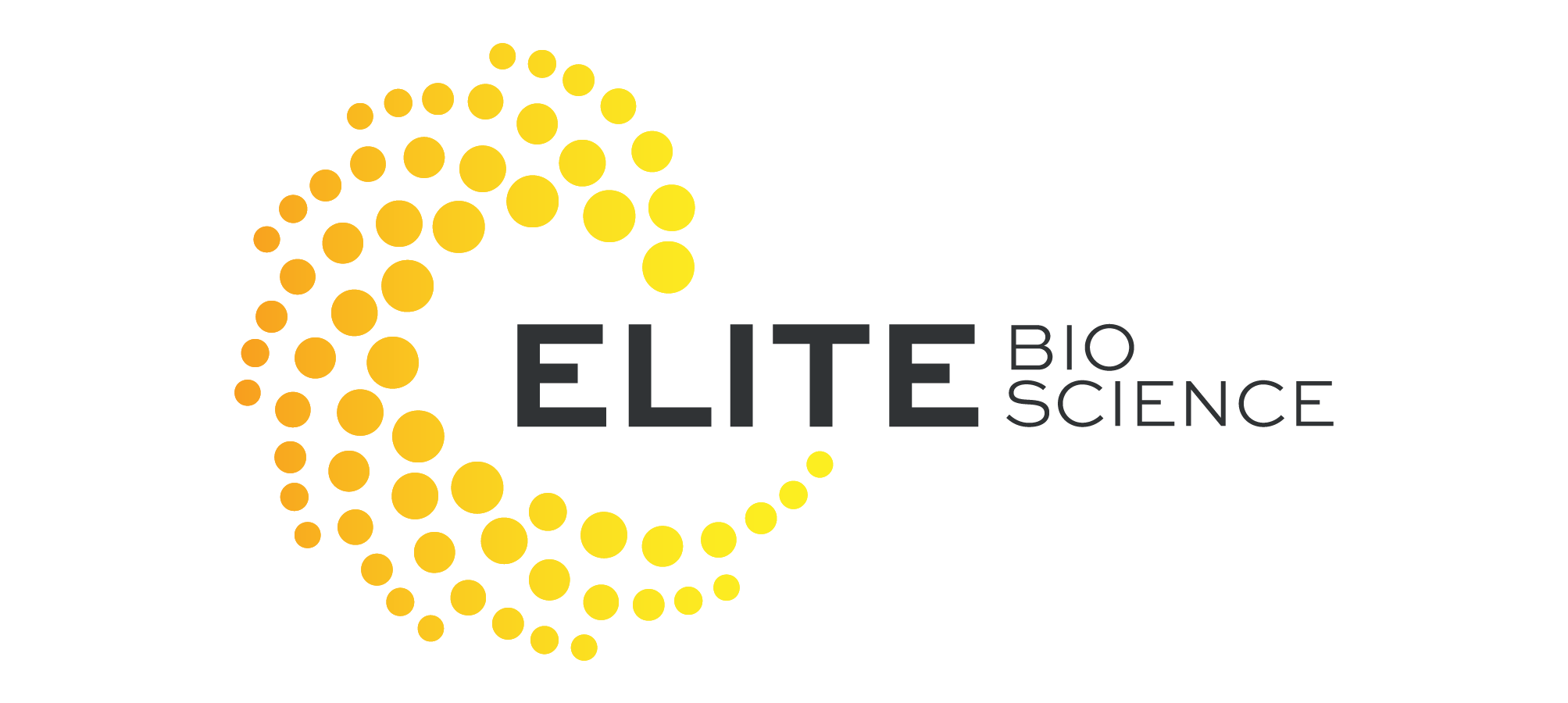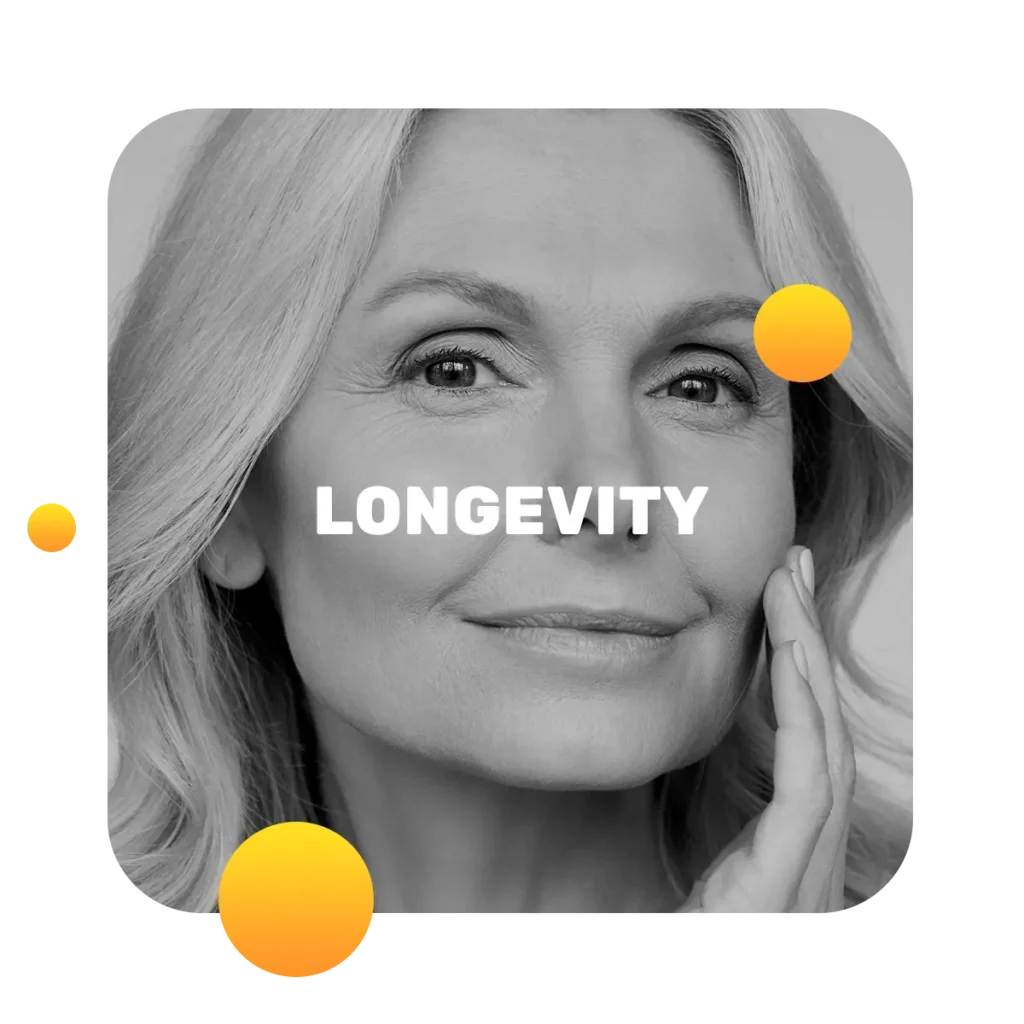How to Tighten Loose Skin a Practical Guide
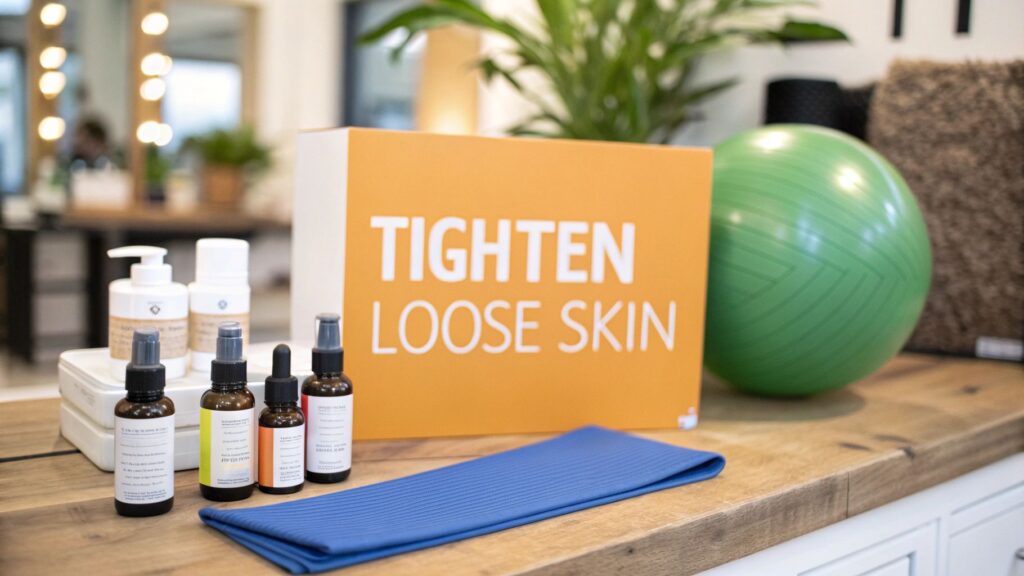
To really tighten up loose skin, you need to attack it from all angles. This isn't about a single "miracle" cream; it's a combination of smart nutrition, muscle-building exercise, and skincare that's actually backed by science. This strategy works by boosting collagen and elastin production from the inside while strengthening the muscle underneath, giving your skin a much firmer foundation to rest on. The absolute key? Consistency. This is what delivers real, lasting results.
Why Skin Loses Its Firmness and What You Can Do
Ever wonder why your skin doesn't feel as tight or bounce back like it used to? The answer is hidden deep in its structure.
Think of your skin like a high-quality mattress. Its firmness comes from a dense network of protein "springs" called collagen and elastin. Collagen provides the structure and strength, while elastin is what gives it that snappy, youthful recoil.
Over time, this support network naturally starts to weaken. It’s a normal part of getting older, but a few key factors can hit the fast-forward button, leading to noticeable sagging and loose skin. Getting a handle on these root causes is the first step in building a solid plan to bring back your skin's vitality.
The Primary Causes of Skin Laxity
There are a few main culprits that directly break down those crucial collagen and elastin fibers, leaving skin looking less firm.
-
The Natural Aging Process: It all starts in our mid-20s. From that point on, our bodies produce about 1% less collagen every single year. That slow, steady decline adds up over the decades, gradually weakening the skin's structural integrity.
-
Rapid Weight Loss: When you drop a lot of weight in a short amount of time, especially through methods that also burn off muscle, your skin simply can't keep up. It doesn't have enough time to shrink and conform to your new, smaller frame.
-
Sun Exposure (Photoaging): UV radiation is public enemy number one for firm skin. It actively shreds existing collagen and elastin fibers, accelerating the appearance of wrinkles and sagging far more than the passing of time ever could on its own.
-
Lifestyle Factors: Daily habits have a huge impact. Smoking, for instance, constricts blood vessels, starving your skin of the oxygen and nutrients it needs to stay healthy. A diet high in sugar triggers a destructive process called glycation, which makes your collagen fibers turn stiff and brittle.
Once you understand that loose skin is really just a symptom of a weakened internal support system, you can stop wasting time on temporary fixes. The real goal is to rebuild that foundation from the inside out.
Tackling these underlying issues is everything. You can't slather on a cream and expect it to magically undo years of sun damage or the effects of a poor diet.
A successful skin-tightening strategy has to protect your skin from more damage while actively helping it regenerate those core building blocks. For a deeper dive, check out our detailed guide on how to improve skin elasticity.
Your Nutritional Blueprint for Firmer Skin
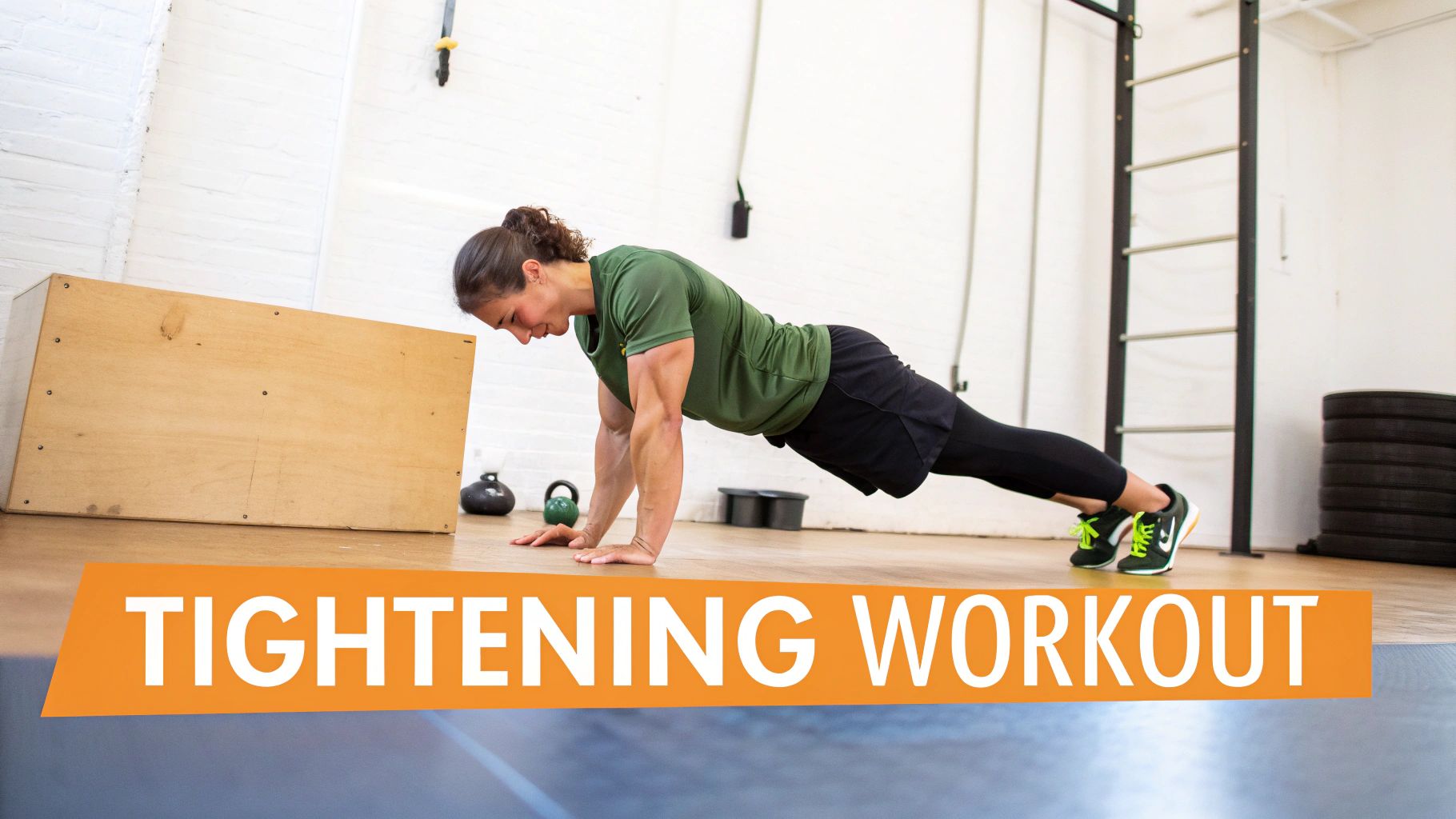
While creams and treatments work from the outside in, the food you eat quite literally rebuilds your skin from the inside out. It's easy to overlook, but a smart, targeted diet is one of the most powerful tools you have for tightening loose skin. Why? Because it provides the raw materials your body needs to manufacture collagen and elastin.
Think of it like building a house. You simply can't construct a strong, resilient structure with flimsy, low-quality materials. It's the same for your skin. Processed foods, sugar, and unhealthy fats actively work against you, whereas nutrient-dense foods are the high-grade building blocks for firm, supple skin.
This isn’t about some restrictive, joyless diet. It’s about being strategic with your nutrition.
Fueling Collagen and Elastin Production
Certain vitamins and minerals are completely non-negotiable when it comes to skin health. They act as essential helpers in the complex chemical reactions that create the proteins giving your skin its structure and bounce. Consistently prioritizing these nutrients can make a visible difference over time.
Your mission is to pack your diet with whole foods that are rich in these key components. For example, that morning smoothie with berries, spinach, and a scoop of quality protein isn't just a healthy breakfast—it's a skin-firming powerhouse.
Here are the absolute must-haves for your grocery list:
- Vitamin C: This is a vital partner in collagen synthesis. Without enough Vitamin C, your body’s ability to produce collagen grinds to a halt. You'll find it loaded in citrus fruits, bell peppers, strawberries, and broccoli.
- Zinc: This mineral is like the foreman on a construction site, helping to repair skin damage and regulate the collagen production line. Oysters, lean meats, nuts, and seeds are fantastic sources.
- Protein (Amino Acids): Collagen is a protein, after all, built from amino acids like glycine and proline. Make sure you’re getting enough high-quality protein from sources like chicken, fish, eggs, and legumes.
True skin firmness is built plate by plate, meal by meal. Consistently providing your body with the right nutritional tools is the foundation for any successful strategy on how to tighten loose skin.
To get a clearer picture of what to focus on, here's a quick guide to the most important nutrients and where to find them.
Key Nutrients and Foods for Enhanced Skin Elasticity
A breakdown of essential vitamins, minerals, and compounds that support collagen and elastin production, with specific food sources for each.
| Nutrient | Role in Skin Health | Best Food Sources |
|---|---|---|
| Vitamin C | Essential for collagen synthesis; protects against UV damage. | Citrus fruits, bell peppers, kiwi, strawberries, broccoli. |
| Vitamin E | A potent antioxidant that protects skin cells from oxidative stress. | Almonds, sunflower seeds, spinach, avocados. |
| Zinc | Aids in cell production, skin repair, and inflammation control. | Oysters, beef, pumpkin seeds, lentils, chickpeas. |
| Copper | Helps link collagen and elastin together to form strong connective tissue. | Shiitake mushrooms, nuts, seeds, leafy greens. |
| Protein (Amino Acids) | Provides the literal building blocks (glycine, proline) for new collagen. | Lean meat, poultry, fish, eggs, dairy, legumes, tofu. |
| Omega-3 Fatty Acids | Maintain a healthy skin barrier, keeping skin hydrated and plump. | Salmon, mackerel, walnuts, chia seeds, flaxseeds. |
| Polyphenols | Plant-based antioxidants that protect existing collagen from degradation. | Berries, green tea, dark chocolate, red grapes. |
Incorporating a variety of these foods into your daily meals ensures your body has a steady supply of everything it needs to keep your skin in top shape.
Hydration and Healthy Fats
Beyond specific vitamins, two other elements are absolutely crucial: water and fat. Dehydration can instantly make skin look crepey and saggy simply by shrinking your skin cells. Aiming for at least eight glasses of water a day is a simple but effective way to keep your cells plump and your skin looking fuller.
Healthy fats, like the ones in avocados, olive oil, and salmon, are essential for maintaining a strong skin barrier. This barrier is what locks moisture in and protects your skin from environmental damage, which in turn helps preserve the collagen and elastin you already have.
For women looking to give their skin an extra edge, exploring different types of collagen supplements can also be a game-changer, providing a concentrated dose of the specific amino acids needed to support this internal rebuilding process.
Strategic Exercises for a More Toned Appearance
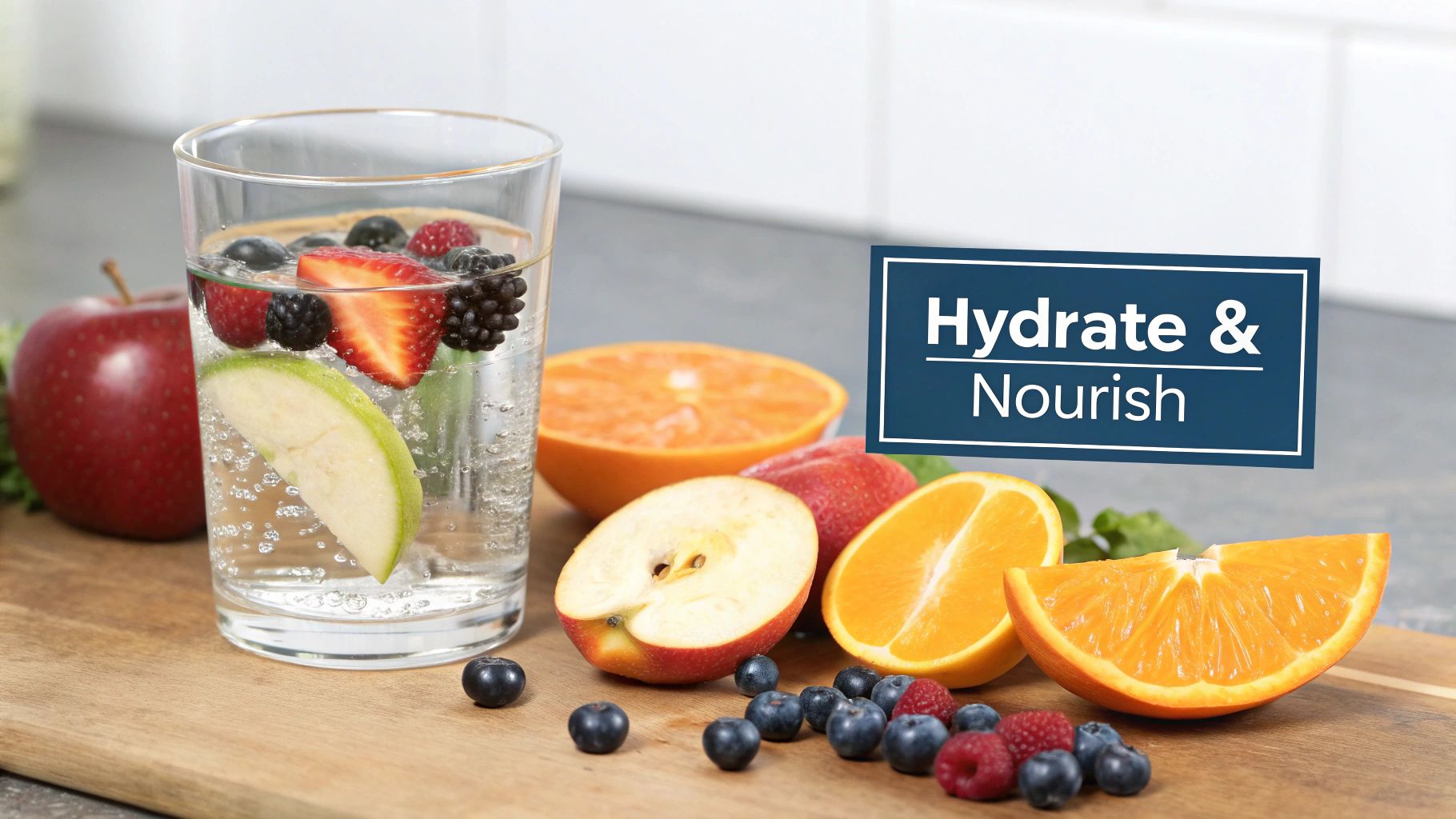
While nutrition and skincare are busy rebuilding firm skin from the outside, a smart exercise routine works from the inside out to create a stronger, more supportive foundation. This isn't about logging endless hours on the treadmill to burn fat. Instead, we're talking about focused strength training to build lean muscle mass.
When you develop the muscle underneath your skin, it acts like a natural filler. It quite literally takes up space, helping to smooth and support the skin draped over it.
This approach is a game-changer after significant weight loss, where losing muscle can often make loose skin look more pronounced. By rebuilding that underlying support structure, you give your skin a much firmer base to rest on, which can dramatically improve its overall tone.
The key is consistency and focusing on resistance. You're aiming for a toned, firm look—not a bodybuilder physique.
Building Your Foundation with Compound Lifts
Compound exercises are your most efficient tool in this process. These are the big, powerful movements that work multiple muscle groups all at once, giving you the most bang for your buck and building a solid, functional base of strength. Think of them as the pillars of your routine.
They don't just build muscle; they also fire up your circulation in a big way. This increased blood flow is vital, as it rushes a fresh supply of oxygen and nutrients to your skin cells, fueling their natural repair and regeneration cycles.
- Squats: The ultimate lower-body builder. Squats develop muscle in your glutes, hamstrings, and quads, which provides crucial support for the skin on your thighs and rear.
- Deadlifts: This is a true full-body movement. It strengthens your entire posterior chain, from your hamstrings all the way to your upper back, creating a strong core and supportive structure.
- Push-ups: A fantastic upper-body exercise that tones the chest, shoulders, and triceps. This helps firm up the skin around the upper arms and décolletage.
- Rows: By strengthening the muscles in your back, rows improve your posture and create a tauter, more lifted appearance across your entire torso.
The goal isn't just to move weight; it's to create tension in the muscle. This controlled stress is the signal your muscles need to grow stronger and fuller, providing that crucial internal support for your skin.
Targeting Common Problem Areas
Once you've laid a solid foundation with compound lifts, you can sprinkle in isolation exercises to zero in on specific areas where loose skin is most noticeable. For many people, this means the upper arms and inner thighs.
These targeted movements help to fill out the area directly beneath the skin with toned muscle. For example, if you're concerned about "bat wings," focusing on triceps exercises can build just enough muscle to give the area a much firmer and more sculpted look.
Here are a few targeted exercises to weave into your routine:
- For Upper Arms: Triceps dips, overhead triceps extensions, and bicep curls.
- For Inner Thighs: Side lunges and sumo squats.
- For the Abdomen: Planks and leg raises to strengthen the deep core muscles.
Combining these specific moves with your main compound lifts creates a powerful, well-rounded routine. This two-pronged approach ensures you're building overall strength while also directly addressing your primary areas of concern for how to tighten loose skin.
Skincare Ingredients That Genuinely Improve Firmness
Beyond diet and exercise, your topical skincare routine is your front line of defense and repair for loose skin. But let’s be honest, navigating the crowded shelves of serums and creams can feel completely overwhelming. The key is to ignore the flashy marketing and focus on a handful of powerful, science-backed ingredients that genuinely work.
The market for these products is booming for a reason. Global spending on topical skin tightening products hit USD 651.3 million in 2022 and is only expected to climb. People are investing in serums and creams designed to boost firmness with ingredients that support collagen and elastin. To make sure your investment pays off, you need to know exactly what to look for on the label. You can find more details in the full market research on skin tightening products.
These powerhouse ingredients are your best bet for making a visible difference.
The Gold Standard: Retinoids
When it comes to tightening loose skin, retinoids are in a class of their own. This family of Vitamin A derivatives works by accelerating cellular turnover, which prompts your skin to create fresh, healthy new cells. It's like spring cleaning for your skin, but on a cellular level.
More importantly, retinoids stimulate fibroblasts—the tiny factories in your skin responsible for producing new collagen. With consistent use, this leads to a noticeable improvement in skin firmness, texture, and overall resilience. Whether you start with an over-the-counter retinol or a prescription-strength tretinoin, this is a non-negotiable for serious results.
The Structural Messengers: Peptides
Think of peptides as tiny communicators. These short chains of amino acids are like text messages sent to your skin cells, telling them to perform specific functions like building more collagen or elastin. Different peptides have different jobs, but some are particularly skilled at improving skin structure.
They are the support crew that helps rebuild and reinforce your skin’s foundation from within. Adding a peptide-rich serum into your routine can help improve the look of sagging and add a subtle plumping effect over time. For those interested in a more advanced approach, you can explore the benefits of using peptides for skin health in our detailed guide.
The most effective skincare routine isn't about using a dozen different products. It's about consistently using a few key ingredients that work together to protect, hydrate, and actively rebuild your skin's support system.
The Support Crew: Antioxidants and Hydrators
While retinoids and peptides are busy rebuilding, antioxidants and hydrators are all about protecting and plumping. They are essential for maintaining the results you achieve and keeping your skin healthy and resilient.
-
Vitamin C (L-Ascorbic Acid): This potent antioxidant does double duty. First, it shields your skin from the free radical damage caused by sun and pollution, which is a major cause of collagen breakdown. At the same time, it’s a critical cofactor in new collagen synthesis, making it the perfect partner for retinoids.
-
Hyaluronic Acid: This molecule is a hydration magnet, capable of holding up to 1,000 times its weight in water. While it doesn’t build new collagen, it deeply hydrates the skin, plumping up cells from the inside. This instantly reduces the appearance of fine lines and gives the skin a fuller, bouncier look.
A simple, effective routine could involve a Vitamin C serum and sunscreen in the morning to protect, and a retinoid or peptide serum at night to repair. This focused strategy gives your skin exactly what it needs to become firmer, healthier, and more resilient.
A Realistic Look at Non-Surgical Treatments
When your diet, exercise, and skincare routine just aren't giving you the firm skin you're after, it might be time to look at professional non-surgical treatments. These procedures can give you a serious boost by working on the deeper layers of your skin, waking up the natural processes that create a tighter, more lifted look without any surgery.
The demand for these treatments is exploding. The global market for non-surgical skin tightening is on track to hit around USD 2.81 billion by 2033. This boom is all thanks to advanced technologies that use energy to kickstart collagen and elastin production deep where it counts. You can discover more about the skin tightening market trends to see how these technologies are changing the game.
Unlike creams that only work on the surface, these treatments send controlled energy right to your skin's foundation, triggering a powerful regenerative response from the inside out.
How Energy-Based Devices Work
The most effective non-surgical options out there generally use one of three types of energy: radiofrequency (RF), ultrasound, or laser. The delivery method might be different, but the goal is always the same—to gently heat the dermal tissue.
This controlled heat signals your body's natural healing cascade. It’s like a wake-up call for your skin’s fibroblast cells, which then go into overdrive producing a fresh supply of strong, new collagen and elastin fibers. Over the next few weeks and months, this process results in a gradual firming and thickening of the skin.
Exploring Your Main Options
There are several highly effective treatments available, and each has its own strengths. Knowing the differences is the key to picking the right one for what you want to achieve.
-
Radiofrequency (RF) Therapy: This is one of the most popular methods for a reason. RF devices, sometimes paired with microneedling, deliver focused electrical energy to heat the dermis. It's fantastic for improving laxity on the face, neck, and body.
-
Ultrasound Therapy: This technology uses focused sound waves that can penetrate deeper into the skin's structural support layers than most other non-invasive treatments. It’s particularly good for lifting and tightening skin on the neck, chin, and brow area.
-
Laser Therapy: Certain lasers are also great for skin tightening. They work by heating the underlying dermis to stimulate collagen while often resurfacing the outer layer of skin at the same time, improving both texture and tone.
The infographic below gives you a clear side-by-side comparison, helping you see how these popular options stack up in terms of sessions, effectiveness, and cost.
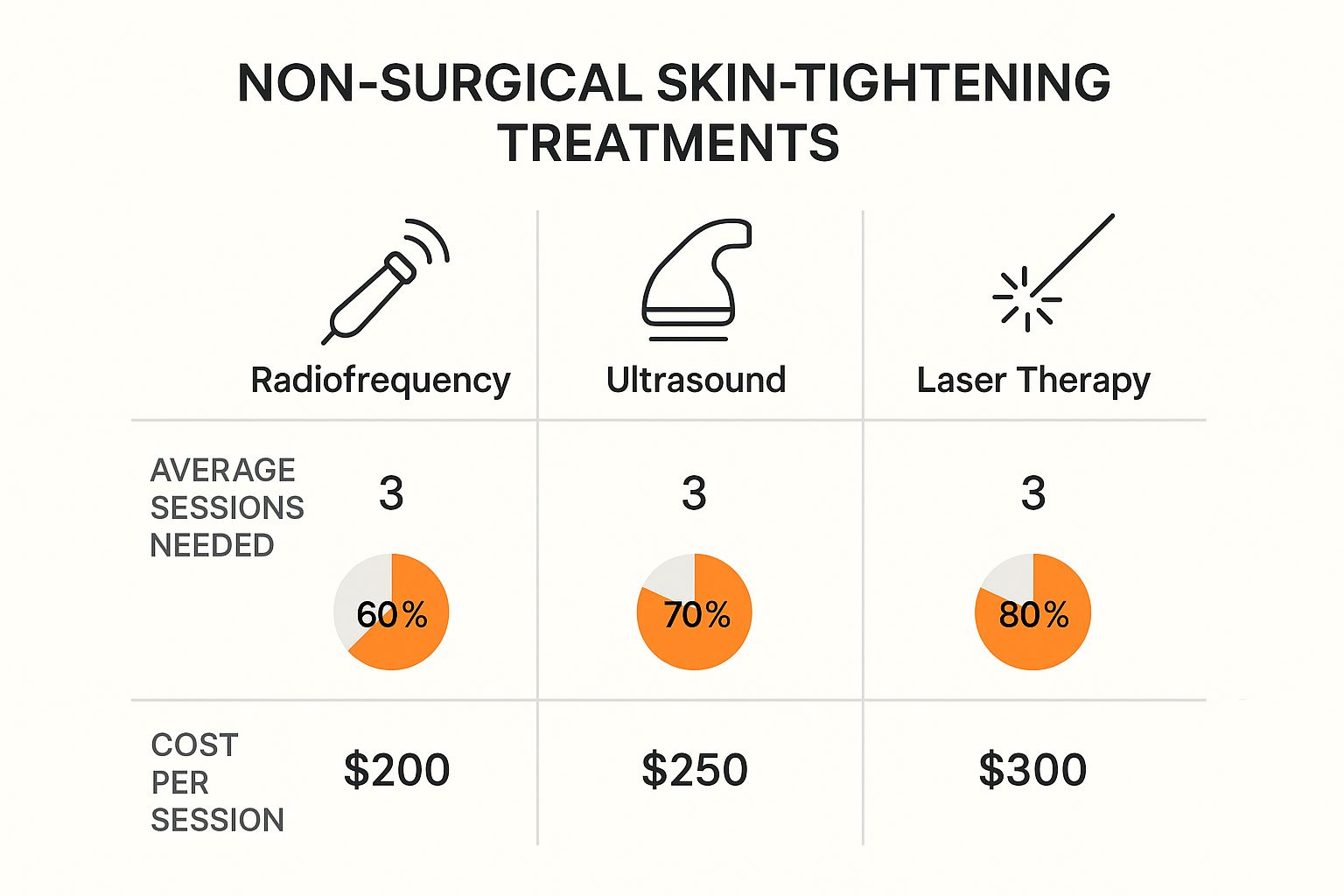
As you can see, while they're all pretty effective, the investment in time and money can be quite different depending on the technology.
To make an informed decision, it helps to compare the top professional options directly. The table below breaks down the most common treatments, explaining how they work, where they're most effective, and what you can expect in terms of downtime and cost.
Comparing Professional Skin Tightening Options
| Treatment | How It Works | Best For | Downtime | Average Cost per Session |
|---|---|---|---|---|
| Radiofrequency (RF) | Uses electrical energy to create controlled heat in the dermis, stimulating collagen production. | Mild to moderate skin laxity on the face, neck, jawline, and body. | Minimal to none; some temporary redness is common. | $500 – $4,000 |
| RF Microneedling | Combines radiofrequency energy with microneedling to deliver heat deeper into the skin for enhanced collagen remodeling. | Improving skin texture, fine lines, acne scars, and sagging on the face and neck. | 1-3 days of redness and minor swelling. | $750 – $5,000 |
| Ultrasound (Ultherapy) | Delivers focused ultrasound energy to the skin's foundational layer (SMAS) to lift and tighten. | Lifting the brow, tightening the neck and under-chin area, and improving chest lines. | None; some patients experience temporary tingling or slight swelling. | $2,000 – $5,500 |
| Laser Skin Tightening | Uses infrared light or laser energy to heat the dermis, promoting the growth of new collagen. | Addressing mild laxity, fine lines, and improving overall skin tone and texture. | Minimal; usually just a few hours of redness. | $600 – $3,500 |
This comparison highlights that each treatment offers a unique approach. While some, like basic RF, offer a gentle introduction with no downtime, others like RF Microneedling provide more dramatic results by combining two powerful techniques.
It's crucial to understand that these treatments deliver gradual, natural-looking results, not the dramatic and immediate change of a surgical lift. Think of it as restoring your skin's own youthful firmness rather than artificially pulling it tight.
Patience is a virtue here. The full effects typically show up two to six months after your last session, once your body has finished its collagen remodeling process. Most people will need a series of treatments, usually spaced about a month apart, to get the outcome they're looking for. The single most important step you can take is consulting with a qualified, board-certified dermatologist or plastic surgeon to make sure you choose the safest and most effective option for you.
Common Questions About Skin Tightening
When you're looking into skin tightening, it’s natural to have a lot of questions. From how long it all takes to whether the results will stick around, getting straight answers is the best way to set realistic expectations and pick the right approach for you. Let's dig into some of the most common things people want to know on their journey to firmer skin.
How Long Will It Take to See Results?
This is probably the first question on everyone's mind, and the honest answer is: it really depends on the path you take.
If you’re relying on consistent diet and exercise, you might start noticing subtle improvements in your skin’s overall tone and appearance within a few months. For topical skincare, ingredients like retinoids are playing a long game; it often takes a dedicated three to six months of use before you see visible firming effects.
Professional non-surgical treatments tend to deliver more noticeable results, but they still demand patience. While you might see a bit of initial plumping right after a procedure, the real magic is happening under the surface. It takes your body anywhere from two to six months to build that new, supportive collagen after your final session.
Are the Changes Permanent?
This is the other big one. For any method that relies on your lifestyle—like strength training or a protein-rich diet—the results last as long as you keep up the habits. If you stop working out or go back to poor eating habits, that skin laxity will likely return. In the same way, the benefits you get from skincare products only last as long as you continue to use them.
Results from non-surgical procedures like radiofrequency or ultrasound can be quite long-lasting, often for a year or even more. However, they don't press pause on the natural aging process. To keep up with your body's ongoing changes, maintenance treatments are usually recommended.
The key takeaway here is that tightening loose skin is rarely a one-and-done deal. It’s an ongoing commitment to a smart combination of strategies that support your skin's health for the long haul.
Are At-Home Devices Actually Effective?
The market is flooded with at-home skin tightening gadgets that use technologies like microcurrent or radiofrequency. While they can offer some very subtle, temporary improvements in skin tone, they simply don't have the power to create the same kind of results you'd get from a professional, in-office treatment. It's better to think of them as a supportive tool rather than a primary solution for significant loose skin.
There's no denying the growing interest in these methods. The data shows a huge jump in non-invasive cosmetic procedures. In 2021 alone, facial procedures shot up by 55%, with combination laser treatments performed over 400,000 times on women in the U.S. This trend shows a real and growing trust in non-surgical options. You can learn more about the growth of non-surgical skin procedures on factmr.com.
For specific problem areas, like the stomach after major weight loss or sagging jowls on the face, a multi-pronged attack is always going to be the most effective. This usually looks like a combination of:
- Targeted exercise to build up the underlying muscle that provides support.
- Consistent use of potent skincare loaded with ingredients like peptides and retinoids.
- Professional treatments to deliver a more significant and focused collagen-building signal.
By combining these strategies, you give yourself the absolute best chance at achieving the firmer, smoother skin you’re working so hard for.
At Elite Bioscience, we provide advanced peptide and vitamin therapies that support your skin's health from the inside out. Explore our tailored protocols to enhance collagen production and promote skin elasticity. Start your journey to firmer, more resilient skin today at https://elitebioscience.co.
QUICK SEARCH
Make an account today to start your journey towards a better and healthier lifestyle.
